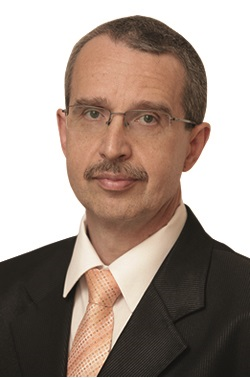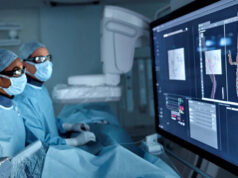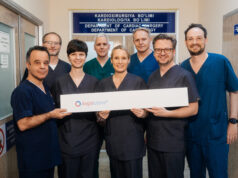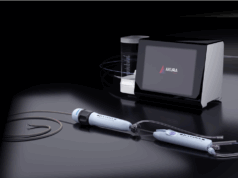“EVRF (F Care Systems) saphenous ablation is a safe and painless procedure for the treatment of the greater saphenous vein and/or small saphenous vein,” according to recently released data. The authors, led by Attila Szabo, VP-Med Health and Education Centre, Budapest, Hungary, write that “high patient acceptance and minimal postoperative discomfort allows a quick return to work and normal life for patients.”
EVRF is a monopolar radiofrequency ablation system for endothermal treatment of small, midsize and large veins. “Endovenous procedures are far less invasive than surgery and have lower complication rates,” the authors write. “The procedure is well tolerated by the patients, and it produces good cosmetic results. Excellent clinical results are seen at four to five years, and the long-term efficacy of the procedure in now known with 10 years of experience.”
Szabo and colleagues evaluated the effectiveness of EVRF treatment and analysed the three-year results of using the device for endovenous radiofrequency ablation and spider vein treatments from July 2011 to March 2015 to treat 751 saphenous reflux and varicosity patients.
Radiofrequency ablation using the EVRF CR45i catheter was performed on 751 limbs (628 greater saphenous vein, 102 small saphenous vein and 21 for both). Complete occlusion was found in 743 of 751 cases (99%) at one month. At one-year follow-up, 15 of 530 patients showed recanalisation longer than 5cm (97.2% one-year occlusion) without clinical symptoms. The three-year occlusion rate was 96.6% (two of 59 patients had an open vein segment). At one-year follow-up the investigators evaluated the postoperative pain reported by the patients on a visual analogue scale (2.4 preoperatively, 1.2, 0.4 and 0.1 at one week, one month and one year postoperatively, respectively) and Venous Clinical Severity Scores (7.7, 3.9 and 1.8 before surgery, at one month and at one year, respectively). The average patient satisfaction was 99% at one year. There were no cases of deep vein thrombosis, skin burns, neuritis or bleeding. “Minimal” bruising was observed at the treatment site of the tributaries in some cases and four patients had mild inflammation which was treated conventionally.
For smaller veins, more than 5,000 treatment sessions for teleangiectasias and spider veins on the face and lower limbs were completed. The authors used radiofrequency treatment or combined the treatment with liquid sclerotherapy. Facial recovery rate was 100% and lower limb recovery rate was 82% on average. The treatments were “well tolerated—although the pain level always depends on the patients’ current psychic status—and the patient satisfaction rate was high,” the authors report.
Szabo and colleagues suggest that “EVRF is appropriate for the treatment of teleangiectasias, reticular veins with the hand piece and K3i or K6i needles (face or lower leg), small varicose veins or tributaries 2–5mm with the hand catheters and for saphenous truncs and perforators 4–15mm in diameter with the CR45i catheter.”
“The procedure, under local tumescent anaesthesia, is simple and the disposable devices are easy to use. The EVRF hand piece with K3i and K6i needles proved to be useful in teleangiectasia treatment, with excellent results,” Szabo et al conclude. “This radiofrequency procedure is also suitable for combination with liquid or foam sclerotherapy.”














